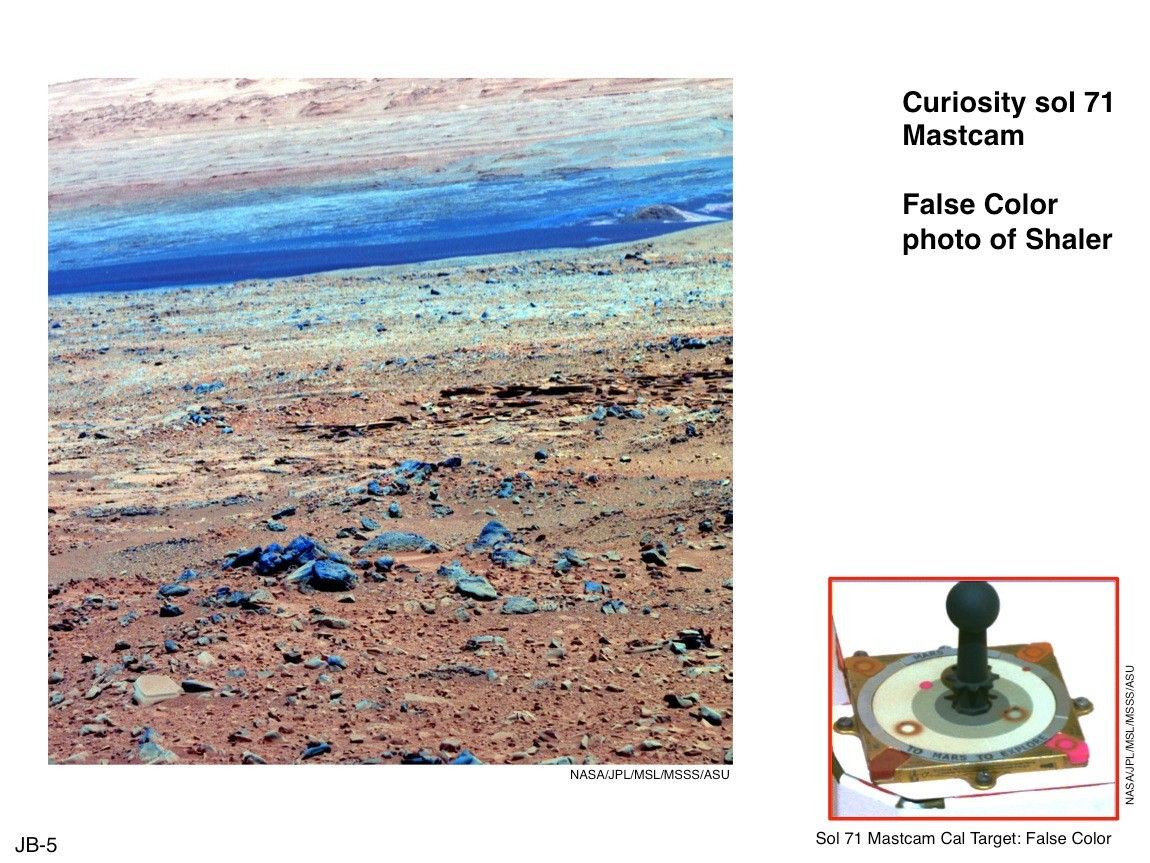Using False Color from Curiosity’s Mast Camera
| Credit | NASA/JPL-Caltech/MSSS |
|---|---|
| Language |
|
This image of terrain inside Mars' Gale Crater and the inset of the calibration target for the Mast Camera (Mastcam) on NASA's Mars rover Curiosity illustrate how false color can be used to make differences more evident in the materials in the scene. This red-green-blue composite was generated from images using the Mastcam's narrowband science filters at wavelengths of 751 nanometers, 527 nanometers and 445 nanometers. Researchers use false-color composites like this to enhance otherwise subtle human-vision color differences and potentially learn more about the composition and mineralogy of rocks and soils on Mars. A "natural" color version of the same scene, at http://photojournal.jpl.nasa.gov/catalog/PIA16801, provides a comparison to this false-color version.
This scene includes a layered outcrop called "Shaler." The Mastcam took this image during the 71st Martian day, or sol, of Curiosity's work on Mars (Oct. 17, 2012).



























